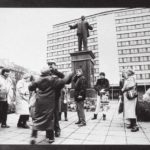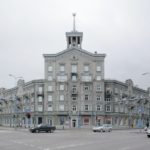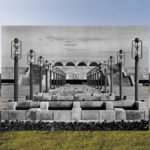If I was to tell you that right next to Tallinn, within view of Old Town, there was a heavily restricted Soviet military complex, where huge 150km-range missile launchers watched over the Baltic Sea while soldiers prowled around networks of subterranean bunkers and thousands of tons deep sea explosives were manufactured, moved and concealed, would you believe me?
Oh, did I mention that this top secret military base was named after the beautiful women who once lived there and has some of the most peaceful and pristine nature you could ever wish to see?
If I was to told you that such a place existed only a stone’s throw from Old Town, you would probably think I was lying, right?
Well, in that case, please allow me to introduce you to one of my the best hidden secrets in all of Estonia: an inconspicuous island with a fascinating story.
Welcome to Naissaar, my friends.
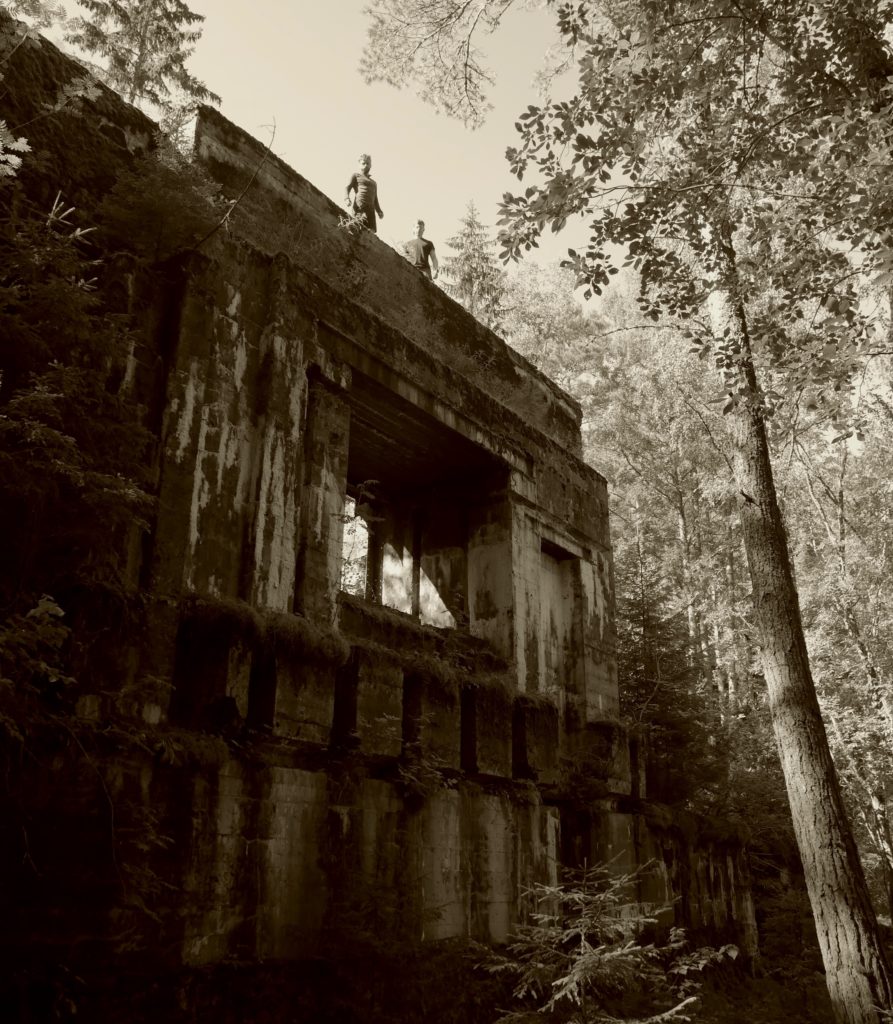
Wait, did you say ‘Women’s Island’?
There is one mystery that confronts you before you even set foot on the island: what’s the deal with the name? Yes, it’s true, Naissaar literally translates to ‘female island’, a very curious name for a place that is known for its heavy artillery, batteries and explosives. For many years I have pondered the logic behind the name and I must admit that until I was researching this article, I had absolutely no idea.
In order to solve this mystery we have to travel back in time a long way. Naissaar was first referred to in 1075 in the chronicles of Adam of Bremen. This important document of northern medieval European history describes a mystical island inhabited by incredibly beautiful women which he called, rather imaginatively, Terra Ferminarum (the land of women). Most historians believe that the island to which he was referring was the island of Naissaar.
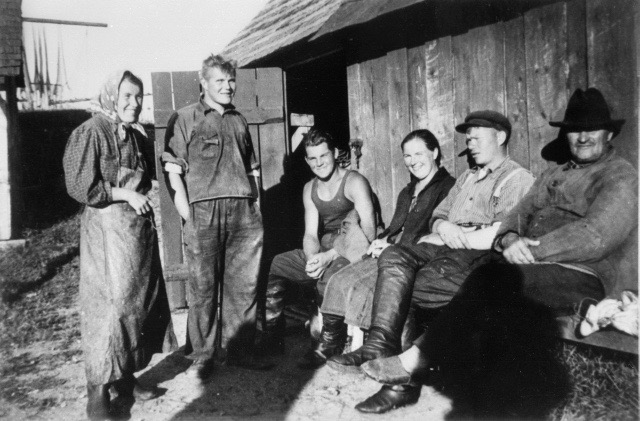
‘Naissaar fishermen’ (Source: Eesti Rahva Muuseum)
Despite the fact that this island was primarily populated by Swedish fisherman and seal hunters for most of its early history, this enticing piece of medieval mythology has survived until the modern day and the name has stuck.
Lighthouse
Lighthouses are all the rage in Estonia. Every self-respecting island or peninsula needs one. Naissaar has had a lighthouse on its northern tip since 1788. The current lighthouse building was built by the Soviets in 1960 but one of the old structures is still there on the beach; a little rusty, but strong enough to climb!
Correction: I have since been told that this structure was actually a foghorn!

1914: Naissaar becomes a military island
The modern history of Naissaar has been dominated by militarisation. Unsurprisingly, given its strategic position, many occupying forces have sought to turn this island into a defence outpost; expanding military capacity and protecting the mainland from external threats.
The Swedes were the first to build fortifications but it was the Russian Empire that took militarisation to a whole new level.
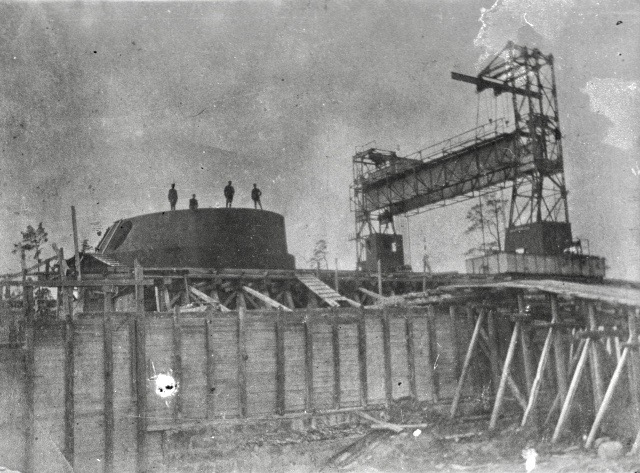
Building the military batteries (Source: Eesti Rahva Muuseum)
Under Tsar Nicholas II, plans were drawn up in the build-up to WWI for the complete militarisation of Naissaar. This project would establish the island as a key part of the Peter The Great Sea Fortification Chain, which protected the coastline of the Russian Empire. These proposals were accepted in 1914 at which point the civilian population was evacuated and a huge construction campaign began.
Artillery batteries began to spring up all along the coastline, mounted by huge missile launchers, strengthening the island’s fortifications. A southern harbour was also constructed along with a 38km narrow gauge railway network, enabling troops, machinery and weapons to be efficiently transported across the island. Almost overnight, Naissaar became a fortress.

There is another strange building dating back to this time known as the Officer’s Casino. It’s original purpose is unknown but for a period in the early 20th century it was one of the main sources of entertainment for the officers stationed on Naissaar. I have heard stories of a sauna as well but the building was pretty derelict so it was hard to confirm this.
The casino down during WWI and was rebuilt in 1924 before being used as barracks during the Soviet Times. Today it is the first stop on the military heritage hiking trail.

The Soviet Republic of Naissaar
Wait a second, this tiny island with a minuscule population was once an independent republic?
Well, what can I say; 1917 was a crazy year.
In the turbulence of war and revolution, the coastline of the Russian Empire was watched over by a plethora military vessels. At this time, a warship called Petropavlovsk was stationed off the coast of Naissaar. Crewed by anarchist revolutionaries, this vessel was there to safeguard the territory and protect the builders of the military fortifications.

The anarcho-syndicalist crew of the Petropavlovsk
In the chaotic aftermath of the October revolution, power of the island passed to the crew of the Petropavlovsk and the Council of Workers’ and Soldiers’ Ambassadors. These revolutionary groups descended on Naissaar and in December 1917 they declared independence!
With great care and imagination they named this brave new society the Soviet Republic of Soldiers and Fortress Builders of Naissaar. Very catchy.
The council immediately began to draw up a draft for a constitution, declaring the small settlement in the south of the island to be the capital and adopting “the Internationale” as the national anthem. As momentum increased, there were even plans to create their own currency. Yes, these guys were serious.
I mean, check out their flags.

“Death to the Bourgeois”

I have seen records of both of these flags being used, but I know which one I prefer…
The German occupation of Estonia began in February 1918. Unsurprisingly, the committee didn’t fancy dealing with this problem so they immediately fled north to continue their revolutionary activities elsewhere.
The glorious reign of The Soviet Republic of Soldiers and Fortress Builders of Naissaar lasted two months.
When the Bolsheviks fled Naissaar in 1918, they adopted a ‘scorched earth policy, blowing up the fortresses and destroying as much as they could. The following image, taken in the aftermath of the Russian departure, really shows the scale of the military infrastructure on Naissaar.

The Germans occupied the island for a short while, building their own temporary bunkers and setting up a prison camp composed of a collection of underground dungeons. So much for the island of beautiful women!
In the interwar years, the newly formed Estonian Republic continued to use Naissaar as a naval base but civilian populations were allowed to return. The vast majority of citizens who re-settled on Naissaar in these years were from the Estonian Army and the island remained a very valuable defence post.
Deep Sea Mines in the Soviet Times
Many of the batteries were once again left in ruins after the chaos and destruction of WWII. By 1950, the Soviets had already set to work on Naissaar; not only restoring the island to its former position as the first strategic line of coastal defence, but expanding its military capacity was beyond anything previously seen.

Fuelled by the tensions of the Cold War, the Soviets built a huge factory complex for the production of anti-ship explosive mines on Naissaar. This giant operation included the construction of workshops, storage facilities, barracks, a power station and the restoration of the railway in order to transport these deadly weapons to the harbour and out into the Soviet Union.
A rocket base was built in the north of the island in 1963, housing some seriously powerful Soviet missiles. According to the maps on the island, some of this projectiles had a range of up to 150km.
This Cold War period was undoubtedly the peak of the militarisation of Naissaar.

Today, these facilities lie abandoned in the forest, their crumbling and rusted facade a reminder of the sheer scale of this military operation. As I followed the overgrown rail lines through this thick silent forest it was strange to think that within living memory this whole island was alive with the humming, grinding and buzzing of military industry, churning out these objects of destruction and preparing for the worst.
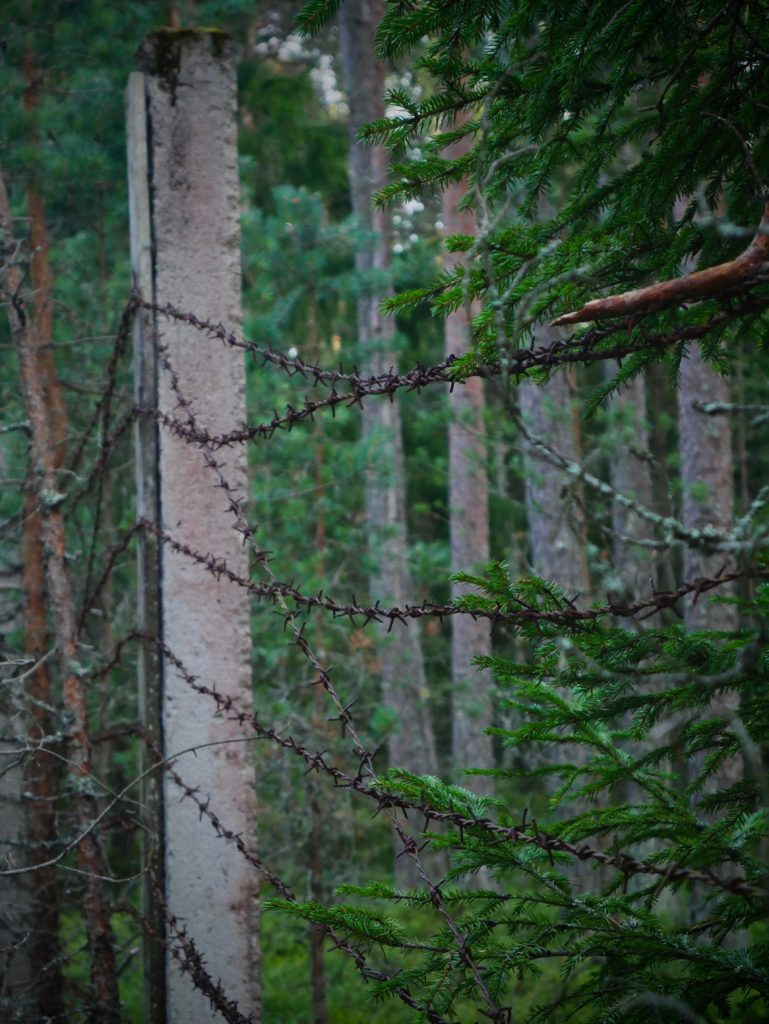
Explore Soviet Tallinn with Me!
If you’re curious to dive deeper into Tallinn’s Soviet past, why not explore it with me on a private walking tour? We’ll visit key locations, uncover hidden stories, and get a real sense of what life was like behind the Iron Curtain. Whether you’re a history buff or just love discovering the past in a personal, engaging way, this tour is designed to bring the Soviet era to life. Book your private Soviet Tallinn tour below!
Soviet Secrets
Naturally, due to the highly sensitive nature of the island, Naissaar was completely off-limits to all civilians, heavily guarded and subject to high levels of secrecy. The mine factory complex was completely erased from Soviet topographical maps. These were were manipulated to show a largely empty territory, covered in forests.
There was still cause for suspicion though…
“wait a second comrade, why does a small forested island with only a few inhabitants need such an extensive network of roads and railways? 🤔🤔“
“good question comrade, please never ask it again”


Post-Soviet Naissaar
When the Soviets left Estonia in 1994 they burned all the explosives that remained on the island. Historians estimate that between 1988 and 1994, 13,000 marine anti-ship mines were disarmed on Naissaar.
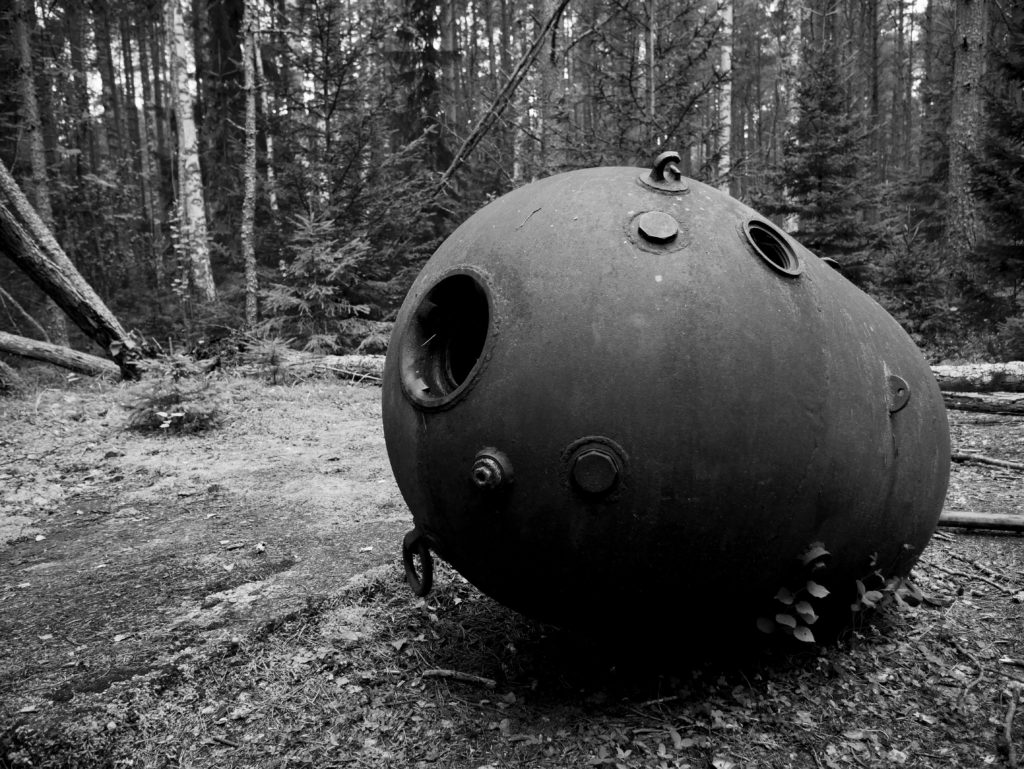
Many of the mine casings were left behind, strewn across the island. One or two of the unexploded bombs have been known to wash up on the shore of Naissaar from time-to-time but the shells that remain are hollow. Most of them are used for cool Instagram-able photos.
A small section of the railway is still functioning. There’s no timetable but it’s possible to hitch a ride.
The rest of the abandoned rail lines still crisscross the island, hiking trails and enticing you to veer off the path and deeper into the forest.

Urban Exploration
It almost goes without say that Naissaar is a gold mine of abandoned places. Pitch-black networks of underground bunkers, disused and overgrown rail lines, damp echoey factory buildings, thick twisted metal, bullet casings and a host of other hidden military secrets are scattered across the island.




Most of the military architecture on Naissaar is protected and is therefore not a target for gentrification and redevelopment. The island remains peaceful and tranqui with only a few inhabitants and vehicles to break the silence. Nature is reclaiming large parts of these structures but it is still possible to indulge your inner Indiana Jones and explore them. I will leave you with a few photos, but it is your duty to come here and discover these hidden places for yourself.



Abandoned Buildings and Wild Nature
An Unforgettable Day Trip
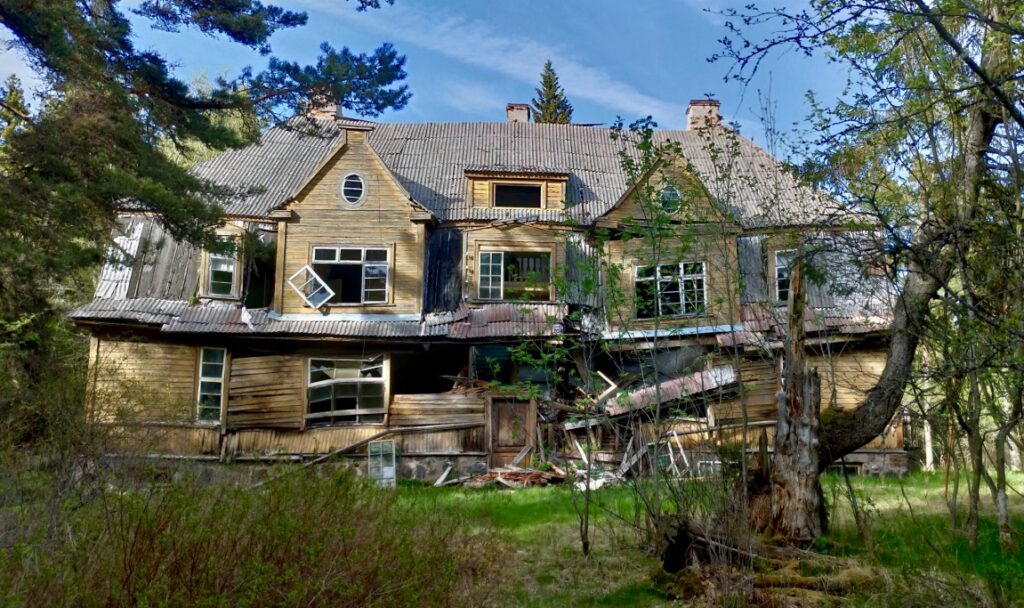
If you’re drawn to abandoned places and untouched nature, join me for a day trip to Aegna Island, where forgotten military ruins meet wild landscapes. We’ll explore crumbling bunkers, hidden structures, and the island’s fascinating past, all while immersing ourselves in its peaceful beauty. It’s the perfect adventure for anyone who loves abandoned places and nature. Book your Abandoned Tallinn tour below!
What is Naissaar like today?
Naissaar is a nature reserve, accessible during the summer with a regular ferry service from Pirita. I have never been here in the off-season but I imagine that if a winter visit is on your itinerary it may be tricky to find passage to and from Naissaar. On the positive side, the seasonal nature of tourism has helped to preserve many of the hidden places on the island. It is not a busy place anyway. We saw about one or two few tours and a handful of travellers in three days during our trip.
There are three main hiking trails, each one guiding you through a different side of the island. The military trail in the north of the island was fantastic; filled with underground bunkers and abandoned architecture. The central nature trail has some awesome nature hiking and the southern trail has the most mines! I won’t give away too much because you need to experience these trails for yourself. There are also two RMK campsites on the island, so don’t forget your tent.

When we explored the island this summer, we went for three days and two nights. In this time we were able to complete almost all of the trails with some extra time for wild swimming and fire-building! Both campsites on the island have campfire stations, toilets and a table area, but the firewood was lacking on the southern site.
There are a few water taps on the island but I would recommend bringing a fair amount with you. We managed to find a natural spring on the beach on our first day but I wouldn’t rely on such sources.
In terms of navigation, the trails are pretty easy to follow but we did use our phones a few times just to double-check. Don’t forget your headtorch though. The bunkers are completely dark and very damp in certain places so it is essential to have your own reliable light source! A fully charged camera and coffee-making equipment are also essential (for me at least).
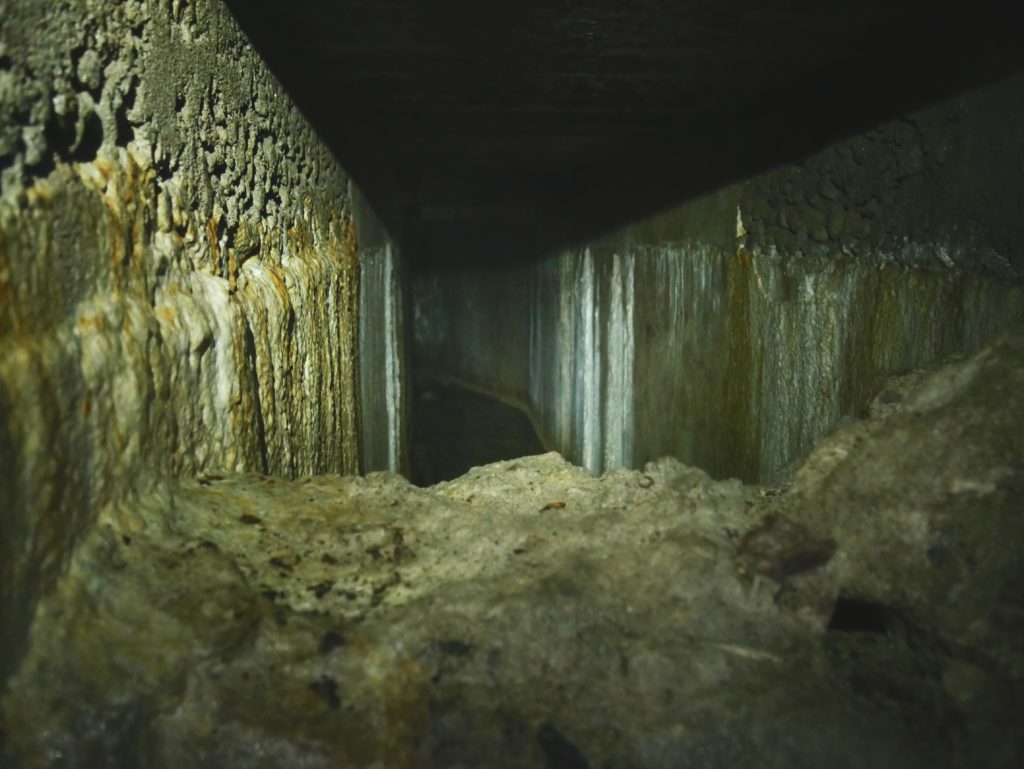
I would definitely recommend a minimum of one night on Naissaar; the island is surprisingly big if you are exploring on foot (as we were) and there is so much to see! If you are pressed for time you can rent bicycles and there are military vehicle tours which might be worth checking out. From my perspective though, independent exploration is superior and hiking is the way to go.

If you have any questions or feedback, please feel free to get in touch. I have included some of the sources I used at the bottom of this article.
Otherwise, thanks for reading and keep exploring!
Sources and further reading:



